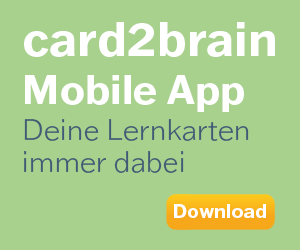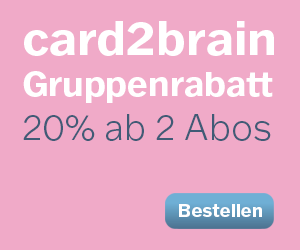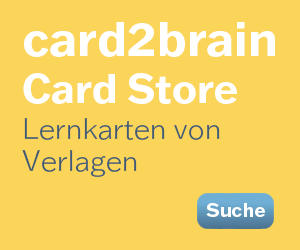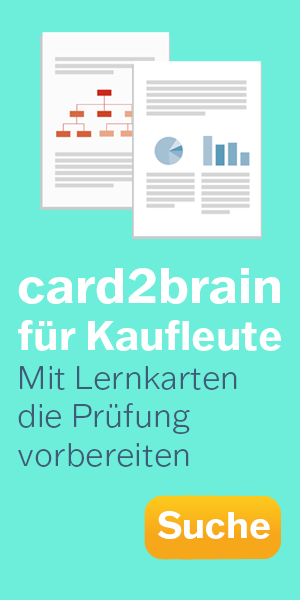TEAAFL
Karteikarten für die Klausur “Teaching English as a Foreign Language”. Kurs von Prof. Merse aus dem WS 22/23
Karteikarten für die Klausur “Teaching English as a Foreign Language”. Kurs von Prof. Merse aus dem WS 22/23
Kartei Details
| Karten | 158 |
|---|---|
| Lernende | 32 |
| Sprache | English |
| Kategorie | Englisch |
| Stufe | Universität |
| Erstellt / Aktualisiert | 19.01.2023 / 29.01.2025 |
| Weblink |
https://card2brain.ch/cards/20230119_teaafl?max=40&offset=120
|
| Einbinden |
<iframe src="https://card2brain.ch/box/20230119_teaafl/embed" width="780" height="150" scrolling="no" frameborder="0"></iframe>
|
Why is learning and teaching about culture important?
- gaining a high level of foreign language proficiency goes alongside mastering the foreign cultural contexts in which the language is used (Blell/Doff 2014)
- cultural meanings are created, contested and circulated through language
- Intercultural Communicative Competence as Leitziel of foreign language education
- holistic and comprehensive educational goals that institutionalized education at school generally has to foster: the learner is not just a language learner, but indeed “someone who also develops other facets of the personality in connection with language learning – especially a greater knowledge and understanding of the world”
What are the Intercultural competences (in the Kernlehrplan)?
- Respectful communication in different ('foreign') cultural contexts with speakers of these contexts (also virtual)
- attitudes towards the other' culture and one's own culture
- applying cultural knowledge in communicative situations
What does ICC stand for?
Intercultural communicative competence
What does intercultural communicative competence (ICC) mean?
Intercultural competence + communicative competence
What is intercultural learning?
- The process towards mastering ICC
- learners → intercultural speakers
What is an intercultural speaker?
An intercultural speaker is somebody who has acquired the necessary knowledge, skills ans attitudes which allow him or her to manage intercultural encounters or solve intercultural conflicts. They have also acquired what may be called 'critical cultural awareness', which means that they are generally aware of how an intercultural situation and the way participants communicate may be influenced by their cultural backgrounds and identities. (Byram 1997)
ICC: What is the knowledge dimension?
- “knowledge about social groups and their cultures in one’s own country, and similar knowledge of the interlocutor’s country on the one hand; knowledge of the processes of interaction at individual and societal levels, on the other hand” (Byram 1997: 35)
→called “soziokulturelles Orientierungswissen” in curricula/standards
- conscious and emblematic knowledge (e.g. overt meanings such as dress or modes of greeting) + factual knowledge of facts and figures (previously: Landeskunde)
- unconscious and unanalysed knowledge (e.g. rules of proximity)
- relativity of cultural knowledge: the same cultural event may be known differently in C1 and in C2 (e.g. school life)
In brief: Knowledge of social groups and their products and practices in one’s own and the interlocutor’s country, and of processes of interaction of individuals and society.
ICC: what is the attitudinal dimension?
- concerned with “attitudes towards people who are perceived as different in respect to the cultural meanings, beliefs and behaviours they exhibit” (Byram 1997: 34)
- “attitudes of curiosity and openness, of readiness to suspend disbelief and judgement with respect to others’ meanings, beliefs and behaviours” (ibid.)
- “a willingness to suspend belief in one’s own meanings and behaviours, and to analyse them from the viewpoint of the others with whom one is engaging” (ibid.)
- complex interplay: the ability to de-centre, i.e. to challenge and relativise the norms one has been socialised into, and to open up to new cultural norms one encounters
In brief: Attitudes: curiosity and openness, readiness to suspend disbelief about other cultures and belief about one’s own.
ICC: what are the skills of interpreting and relating?
- applied to ‘documents‘ in the widest possible sense: all sorts of text types, but also (in principle) to other signifying practices or events that can be ‘read’ and ‘interpreted’
- interpreting and deciphering a cultural document (with available frameworks vs. with newly learnt frameworks)
- relating a document from the target culture to a similar document from the source culture
- example: What do two women or two men holding hands in public signify or mean?
In brief: Skills of interpreting and relating: ability to interpret a document/event from another culture, to explain it and relate it to documents from one’s own.
ICC: What are the skills of discovery and interaction?
- involves concrete social interaction or staying or living in a foreign cultural context
- “[t]he skill of discovery is the ability to recognise significant phenomena in a foreign environment and to elicit their meanings and connotations” (Byram 1997: 38)→learner as ethnographer
- establishing relationships, managing dysfunctions, being a mediator between people of different origins and identities;
- drawing on existing cultural and linguistic competences to keep a communicative interaction alive and to establish a relationship between oneself and the interlocutor(s)
In brief: Skills of discovery and interaction: ability to acquire new knowledge of a culture and to operate knowledge, attitudes and skills in real-time communication/interaction.
ICC: what is critical cultural awareness?
- the culmination or sum of the other four dimensions
- evaluative dimension: to evaluate critically cultural products and practices emerging from one‘s own culture and from the foreign culture
- requires to coordinate and change perspectives (Perspektivenwechsel)
- aim: overcoming ethnocentrism (the own cultural position is always
considered superior, the other cultural position inferior) - be critical of cultural relativism, i.e. do not unconditionally accept the alleged righteousness of foreign cultural practices (e.g. unethical practices such as child labour, certain gendered practices...)
- "The ability of standing back from our ‘own’ cultural imprint and becoming aware of our ‘own’ cultural values, beliefs and perceptions as culture-specific (rather than universally true) in view of ‘other’ cultural imprints and ‘other’ values, beliefs and perceptions (without cultural relativism)."
In brief: Critical cultural awareness: ability to evaluate critically and on the basis of explicit criteria perspectives, practices and products in one’s own and other cultures/countries.
ICC: What teaching techniques are there?
- Using culture-oriented sections in coursebooks
- face-to-face or virtual/online encounters
- cultural reading of literature, film, images and non-fictional texts as carriers of cultural content/information (Freitag-Hild)
- critical incidents, role plays and simulation games
What is the problem with INTERcultural learning?
Stop! → valuable ‘imports’ from intercultural learning
- focus in dialogue and exchange between ‘Self’ and ‘Other’
- critical reflection on learners’ ethnocentric perspectives for the purpose of critical self-distancing (de-centering)
- attitudes of open-mindedness and empathy
- cultures are not internally homogeneous → diversity
- cultures are no distinct and clearly seperable entities→overlap & exchange
- cultures are not static→changing and dynamic
- intercultural encounters are not always conflict-free→power & hierarchy
What is transcultural learning?
- turn towards so-called New English Cultures: post-colonial influence on cultural learning (e.g. India, South Africa, Canada, New Zealand, Nigeria) – expansion of so-called ‘core cultures’ (UK/US)
- stresses the diversity of cultures by taking into account other facets than ‘the nation’: gender, LGBTIQ identities, class belonging, ethnic identity, religion...
- stresses the hybridity of individual and collective identities (“No one today is purely one thing.”, Said 1993) → moving beyond clear-cut and simplistic labels such as British, Muslim, woman, lesbian
- new sensitivity towards power struggles and asymmetries, social and cultural privilege, and inequalities
What is Global Education?
- additional line of development in cultural learning that is not centred on countries and their cultures
- starting point of Global Education: topics of international relevance that do not ‘stop’ at national boarders (“global issues”), e.g.
- sustainability, climate change, environmental perspectives
- migration
- digitalization
- human rights
- aim: enabling learners to become responsible global citizens
What are the challenges of Intercultural, transcultural and global learning?
- direct cultural encounters and experiences in Anglophone cultures are difficult to establish as a norm for regular EFL education → we need to represent cultures through cultural artefacts
- cultures, identities, global issues are hypercomplex and can never be represented in full → ‘moving target’ + ‘exemplary representations’
- balanced modelling of cultural discourses in the classroom through ‘ensembles of texts’→bringing in multi-perspectivity and diversity in the selection of texts and artefacts
- unlocking the learning potential of texts and artefacts through
- empathetic reading: changing into another person’s perspective
- cultural reading: reconstructing the cultural world through further information and additional texts
Name some reasons for working with literature in the EFL classroom.
- teaching literature has always been there – it’s a tradition
- literature offers language experience – being immersed in the language while reading (‘language bath’)
- literature is emotional – we feel with the protagonists
- the topics, the drama, the joy of literature – it’s exciting, provocative, controversial, funny
- English literature is a central aspect of the English-speaking world, so learners should know about it
- literature deals with current issues of our times – through the means and mechanisms of storytelling
- literature provides access to other cultures and other worldviews
Today we have a broad notion of literature. What does that mean?
- mirrors the use of literature from primary up to lower and upper secondary: learner-centred text choice→literature for all levels
- picturebooks, short poems, nursery rhymes
- film and video: feature films, short films, animated films
- poetry, narrative texts (incl. short stories, novels), dramatic texts (incl. their performances on stage or in films)
- literature with word-image combinations (‘multimodal literature’): picturebooks, wordless novels, comics, graphic novels
- adapted originals → graded and annotated readers
- children’s and young adult fiction
What is the literary canon?
- a binding and prescriptive list of esteemed, prestigious and traditional literary works – mostly by dead, white and male authors from the UK or the USA
- such a canon necessarily produces gaps and marginalizes less esteemed types of literature
- lively canon critique since the 1980s
- broadening of the literary texts that are read vs. similar text choices still made by teachers (‘hidden canon’)
What modern changes to traditional canons are there?
Text choices:
- (to be slightly reductionist): text choices that expand on, or are no longer reduced to, full-length novels written by white, male, heterosexual and dead authors from the UK and the US
- a canon revision that seeks to include “the distorted, drowned, forgotten voices in texts” (Volkmann 2007, p. 176) that provide alternative views on the world not shaped by – or expressed – through white, male, heterosexual, Western... viewpoints → DIVERSITY
- Feminist perspectives:
- female authors
- female protagonists
- Queer perspectives:
- literature with LGBTQ+ themes
- literature with LGBTQ+ protagonists
- Ethnic diversity and post-colonial perspectives:
- increased diversity of Anglophone societies outside of white perspectives
- literary works from the postkolonialen Anglophone world
- Feminist perspectives:
- a canon revision that seeks to include multimodal and digital text types as alternatives to full-length print novels (e.g. graphic novels and comics, picturebooks, feature films, short animated films)
→TEXT FORMATS
What are the criteria one should keep in mind, when choosing literary texts in a teaching context?
- manageable in length and difficulty
- motivational appeal to learners
- thematic adequacy→needs to match with given topics
- authentic and representative in view of cultural issues
- appropriate for the age group
- suitable for creative and communicative follow-up tasks
- can be structured into sections = lesson
What are the general distinctions of teaching approaches and methods (when teaching literature)?
- structuring the engagement with literature and film into task sequences: pre-, while- and post-activities
- personal involvement with literature and film → learners develop subjective responses to literature (Reader Response Theory)
- analysis and interpretation of meaning: aesthetic, formal and cultural views on literature and film
- creative approaches: ‘production’, ‘action’ and ‘performance’
Explain what pre-reading/watching activities are and give examples.
Explain what while-reading / watching activities are and give examples.
- Exercises or activities that are completed while reading the text / watching the film
- can assist students in developing receptive competences can also ensure a more deliberate and intense examination of the text and steer the focus on certain aspects of the text
→ Example: Completing an action line while reading/watching (students write short notes on major developments in the text / film)
Explain what post-reading/watching activities are and give examples.
- Exercises or activities that are completed after the students have read a given text / watched a film
- activities help students to reflect on what they have read or watched
- provide a means to react to a text / film critically or creative
→Example: Writing or acting out an alternative end to the film/novel
What are production-oriented activities?
Generating new texts through rewriting, expanding, or alienating the original text:
- creating an Instagram profile of a protagonist
- developing a character constellation chart with arrows that describe the relationships between them
- transforming a poem into a blog entry
- making a film poster for a novel
- inventing an ending to a short story, or rewriting the ending
- collecting reading impressions in a digital portfolio
What are examples of action-oriented and performance-based activities?
- acting out a literary scene with a different character constellation
- carrying out an interview with the protagonist of a short story
- non-verbal presentation of an inner monologue
- creating a freeze frame for a text passage
Define 'Media'.
- a medium is the means by which information and messages are transferred from one place to another
- usually, the material and technological characteristics of a medium are used for classification (e.g. print and paper newspaper; DVDs; e-readers, tablet)
- information is conveyed, or ‘encoded’, through the use of certain modes
- associated with given functions of the medium (e.g. reading for information, listening for entertainment)
Define 'mode' (monomodal & multimodal).
A ‘mode’ describes the channels or means through which meaning and information are conveyed; if a certain medium uses one mode, it is called ‘monomodal’; if two or more modes are integrated, it is called ‘multimodal’ (e.g. auditory media, visual media, written media, digital media...).
Define 'multimedia'.
‘Multimedia’ describes a context or system (e.g. a classroom) in which several media are combined and used alongside each other; historical shifts from additive analogue systems to integrative digital systems (with several media, serving several functions, in one device).
What are the basic asumptions of teaching skills when it comes to digital education?
- a teacher must be digitally literate:
- Digital literacies: the individual and social skills needed to effectively
interpret, manage, share and create meaning in the growing range of
digital communication channels
- Digital literacies: the individual and social skills needed to effectively
- a teacher must be able to create matches between EFL-related objectives and the use of digital media (e.g. language, communication, cultural learning, presentation)
→ no 'technological determinism' or 'tool fetish'
What does the model of the Virtuelle PH (Schmidt/Strasser) look like?
- A: digital literacy skills and IT-knowledge
- e.g. How to use laptop / tablet and projector to show L2-videos
- B: digital life
- e.g. Discuss questions of data privacy (as a topic in the EFL classroom)
- C: design digital materials
- e.g. Create interactive quizzes for the EFL classroom (crossword, close, millionaire game, etc.); design digital handouts
- D: teach and learn with digital media
- e.g. Create a lesson plan with cloud-based applications like Evernote, Google Drive, etc. in order to have ubiquitous acces to materials
- E: teach and learn with digital media in your subject
- e.g. Use interactive EFL websites
- F: digital administration
- e.g. Use digital grade sheets for your students (automatic algorithms, formulas, scoreboards, etc.)
- G: digital school community
- e.g. Use a learning management system like Moodle to communicate with pupils and parents
- H: Digitally-inclusive Professional Development












